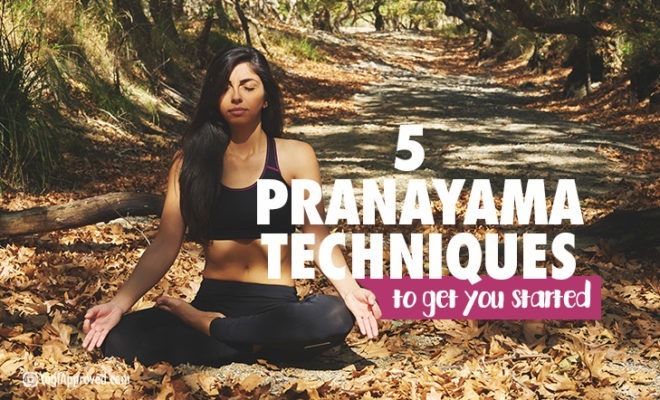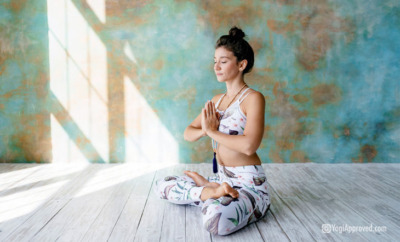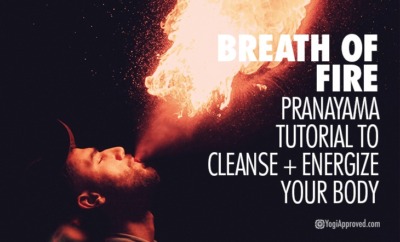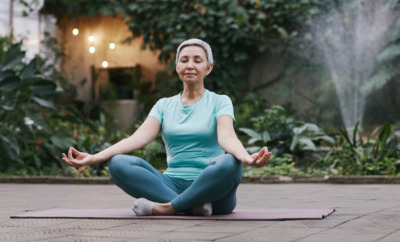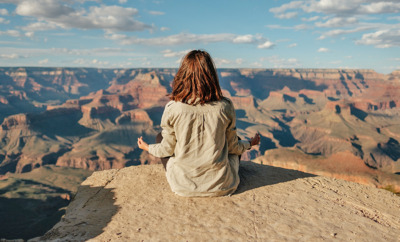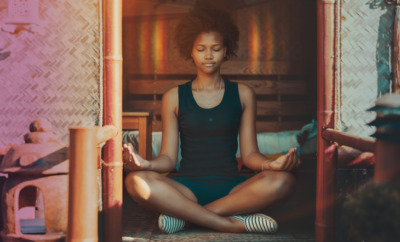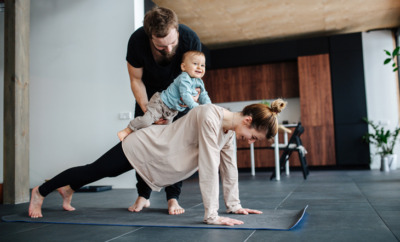These 3 Pranayama Techniques Will Bliss You The F– Out!
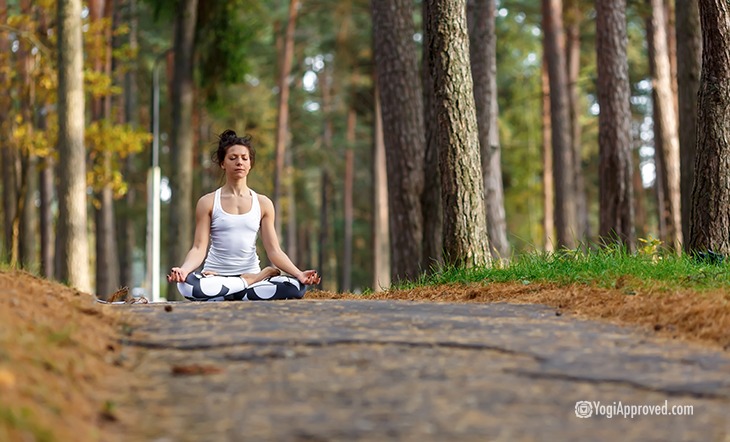
pranayama bliss f out featured 1
Pranayama, or conscious breathing, is active control of the breath. “Prana” means life force and “Yama” means vehicle. Our Pranayama practice creates an expansion of life force energy within our body. As a result of using Pranayama breathing techniques, our life force energy (or what we often call prana) moves much more powerfully and freely within the body, cleansing the energetic channels.
Pranayama gives us the power to change the way we feel, and shows us that we can find bliss in the present moment, simply by conscious focus on the breath.
Often times the result of a Pranayama practice is a feeling of bliss, euphoria, and what some have even referred to as feeling drunk or high. Ever heard of “yoga brain” – that slightly out-of-it state when we emerge blissfully dazed from a good yoga class? Pranayama produces a similar feel-good, happy feeling.
The “feeling of drunkenness” after Pranayama happens because the oxygen that we intake with each inhalation increases our circulation and blood supply to the brain.
To illuminate this blissful effect, strengthen the lungs, and help purify the body and calm the mind, continue to practice Pranayama regularly. The effect of Pranayama is similar to the one experienced after being in an enclosed room and then going outside into fresh air. You’ll feel refreshed, rejuvenated, and happy as a clam.
There are a lot of Pranayama techniques out there! While they all offer a wide variety of benefits, which techniques give us the most euphoria?
Let’s explore the three Pranayama practices that offer a varying range of bliss, euphoria, and all the good feelings below:
1. Nadi Shodhana
Nadi Shodhana Pranayama, or Alternate Nostril Breathing has a moderate effect of bliss on the practitioner. Nadi Sodhana helps the practitioner breathe steadily and calmly. This practice is mostly used to purify and balance the psychic channels. It brings a great sense of calm to mind and body.
To practice Nadi Shodhana, place the right hand in Vishnu Mudra (fold the index and the middle fingers to the palm), the left hand in Jnana Mudra (tip of the index finger touches the tip of the thumb) and inhale slowly through the left nostril.
Psst! Want to learn more about these mudras? Read Common Mudras, Their Meaning, and How to Practice Them.
Keep the right nostril closed with the right thumb. Close the left nostril with the ring finger and immediately open the right nostril and exhale. Inhale through the right nostril. Keep the left nostril closed with the right finger. Exhale through the left nostril. Immediately release the right finger and close the right nostril with the thumb.
Yesss, we did it! That was one full cycle of Alternate Nostril Breathing. New practitioners can start with a four-second inhalation and a four-second exhalation. Start with six cycles at the beginning of your practice, and over time you can gradually increase your practice to 12 cycles.
2. Kapalabhati or Skull Shining
This practice has a slightly more noticeable effect than Nadi Shodhana and leaves the practitioner feeling blissed out. Inhalation and exhalation is performed much faster than our previous Pranayama technique. Terrified by such speed, toxins quickly rush to escape the system, creating a heightened cleansing and detoxifying effect on the body.
Before beginning this practice, first clean the nasal passages by gently blowing your nose so the air can flow through the nostrils freely. Inhale steady and pump the breath out vigorously through the nostrils. Exhalation should be two to three times faster than inhalation. Forcefully press the abdomen towards the spine when exhaling and expand it when inhaling.
For beginners, it is best to start with 10 inhalations and exhalations. Make three rounds of 10 according to your personal breathing capacity. Once you finish round one, hold the breath for some time and then exhale slowly to bring the system into balance.
3. Murcha Pranayama
Murcha Pranayama, or Chin Press Breath, is the leader in the highest effect of euphoric bliss, and it’s no surprise why. The Sanskrit translation of the practice means “swooning breath.” Feelings of bliss and euphoria are sure to follow this Pranayama exercise.
To experience the full effects of Murcha Pranayama, sit in a comfortable position with your spine extended tall. Gently close your eyes and begin to slowly inhale through the mouth until your lungs are full. Continue to hold, or retain, your breath here. Bring your chin down to your chest, and slowly exhale.
For great results, practice Murcha Pranayama 5 – 10 rounds at a time. After completing these rounds, take a moment to notice how you feel. The effects are incredibly palpable and you’ll come away with a sense of peaceful bliss. Not only does this Pranayama offer the greatest feel-good sensations, it’s also the most advanced of the Pranayamas listed here, so be sure to take it slow and work your way up to it.
All of these conscious breathing techniques have one main purpose – to cleanse and detoxify the body and help clear the mind. Begin where you are and build your Pranayama practice slowly. Whether you’re trying it for the first time out of curiosity, looking for natural ways to feel amazing, or a seasoned Pranayama practitioner, conscious breathwork is good for everyone.
Pranayama gives us the power to change the way we feel, and shows us that we can find bliss in the present moment, simply by conscious focus on the breath. Happy breathing, yogis! Cheers to feeling amazing – without outside stimulants.


This Month's Letter
From the Editor
Monthly motivation and food for
thought from our founder.

